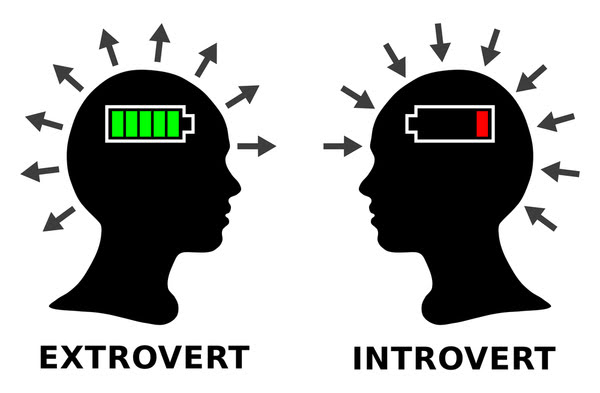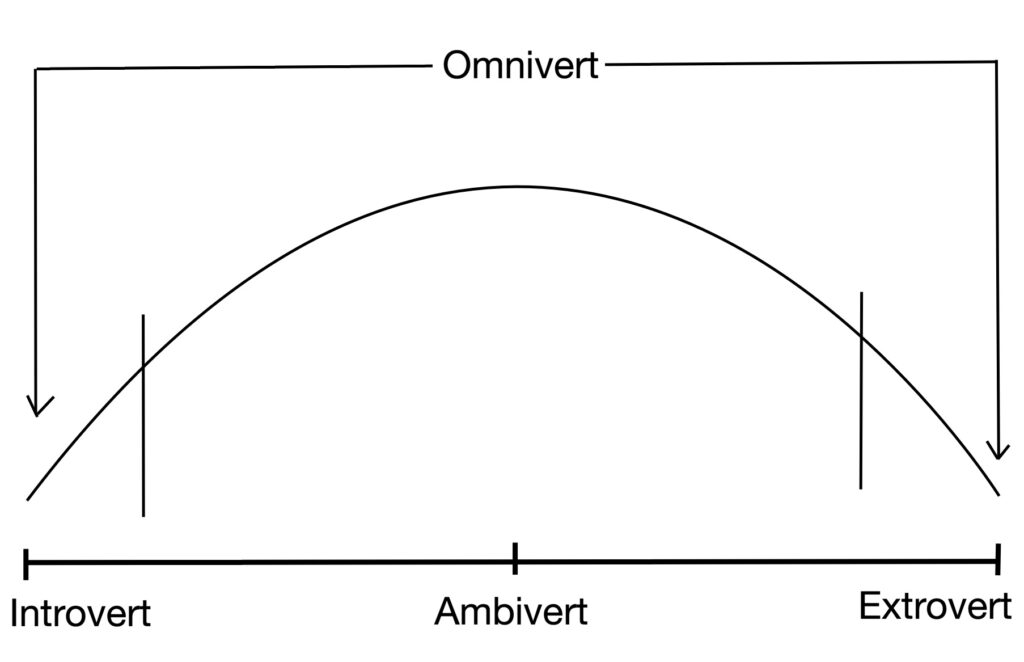Most people know what ‘introvert’ and ‘extrovert’ means. Some know what ambivert means, but very few people have encountered the term ‘omnivert’.
Both ‘omnivert’ and ‘ambivert’ have the Latin root vertere in them, which means ‘to turn’; ambi means ‘both’, and omni means ‘all’.

So, ambiverts literally turn both ways. They have both introverted and extroverted personality traits. Omniverts also have both introverted and extroverted traits.
The ‘all’ in ‘omnivert’ comes from omniverts being either ‘all introverts’ or ‘all extroverts’ at any given time. They turn entirely one way, towards either introversion or extroversion.
In contrast, ambiverts tend to have a balance of introversion and extroversion. Even if they lean more toward one personality type, they can easily balance themselves or lean slightly toward the other type.
The battery drainage analogy
Many people use these two terms interchangeably. It makes sense because the difference between these two terms is slight and subtle.
It all boils down to how the two types recharge their social batteries.
If, for instance, having a charge in your phone is extroversion, then an ambivert’s battery is 50% charged most of the time. It may go up to 60% or 70%. It may go down to 40% or 30%. But it is never completely drained.
When it gets drained, ambiverts can recharge themselves easily and quickly.
But omniverts are either 100% charged (extreme extroversion) or 0% charged (extreme introversion). They fluctuate sharply between ‘all introversion’ and ‘all extroversion’. They lie on the extreme ends of the introversion-extroversion spectrum at any given time.

Taking the Omnivert vs Ambivert test
Since the difference between omnivert and ambivert is small, this test is brief and only consists of 8 items on a 2-point scale with options ‘Yes’ and ‘No’. When you finish the test, you’ll get a score on Omnivert and a separate score on Ambivert.
Omniverts and ambiverts have many similarities. I overlooked those for the sake of this test and included only the points of difference.
Your results are only displayed to you and not stored in our databases.

